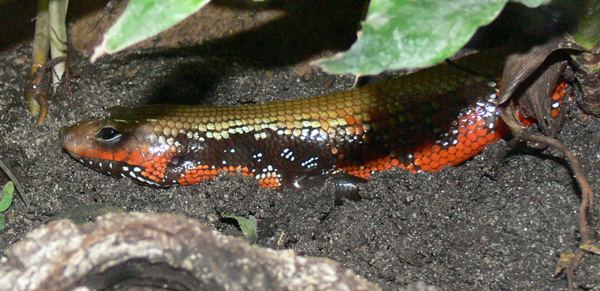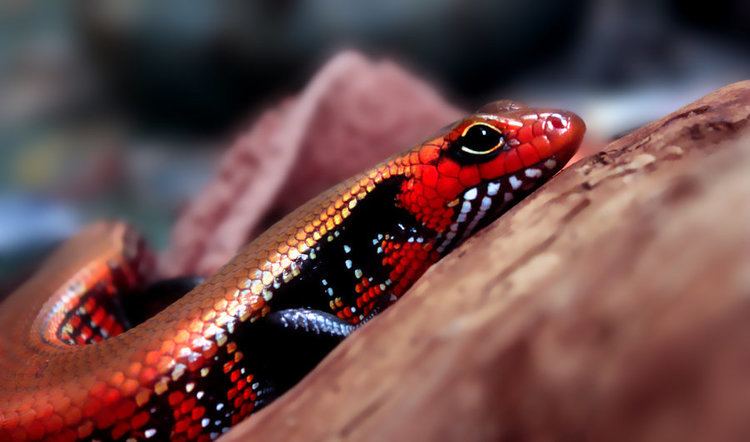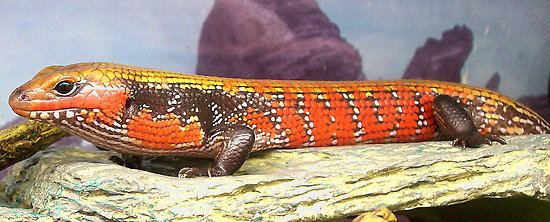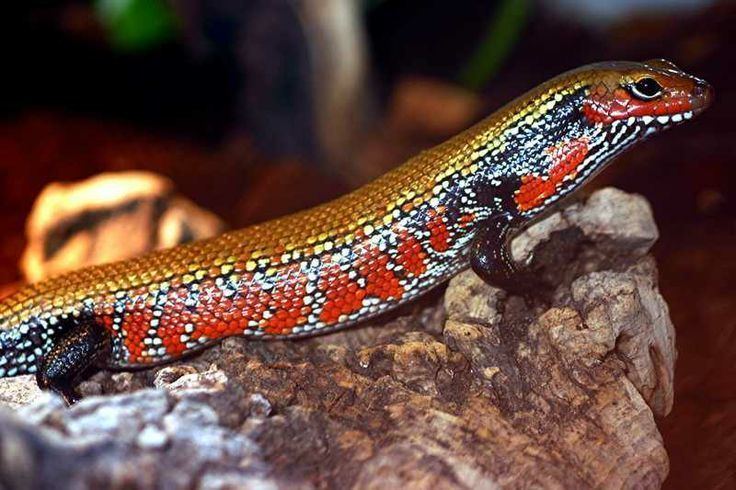Subfamily Scincinae Scientific name Lepidothyris fernandi Rank Species | Genus Lepidothyris Higher classification Lepidothyris | |
 | ||
Similar | ||
Baby fire skinks and husbandry info
The fire skink (Lepidothyris fernandi), also known as the true fire skink or Togo fire skink, is a fairly large skink, a type of lizard. They are a beautiful species known for their bright and vivid coloration. Native to tropical forests in Western Africa, they live fifteen to twenty years. This species is a diurnal lizard that love to burrow and hide. They are relatively shy and reclusive, but may grow to become tame in captivity.
Contents
- Baby fire skinks and husbandry info
- Hand feeding a tame fire skink
- Taxonomy
- Biology
- In captivity
- References

Hand feeding a tame fire skink
Taxonomy

Historically, the fire skink has been placed in several different genera and was until recently placed in Riopa together with several skinks from southeast Asia. While these are superficially similar to the African fire skink, they are closer to some other Asian skinks, resulting in their move to Lygosoma. The fire skink is not closely related to other skinks and belongs to the genus Lepidothyris. However, a review of the taxonomy of the fire skink did reveal that it, as traditionally defined, actually consists of three separate species. This essentially limits true L. fernandi to tropical Western Africa, while population in Central and East Africa are L. hinkeli and L. striatus.
Biology

The fire skink is a fairly large species of skink, reaching up to 37 cm (15 in) in total length. The most notable aspect of fire skink biology are their vivid, bright colors. Smooth, gold scales adorn the fire skinks backs, while red and black bars set against a silver background line their sides. Fire skinks do not display obvious sexual dimorphism, which makes them difficult to sex. Males are, in general, bulkier than females with a slightly flatter head and wider jaws.

Fire skinks, unlike many other skink species, are oviparous. A female will generally lay a clutch of five to nine eggs after mating. Fire skink eggs take forty to fifty days to hatch when incubated at a temperature of 85 °F (29 °C).

This species has a large appetite and it is mainly insectivorous. Insects such as crickets are main part of their diet in captivity. Larvae such as mealworms are used for feeding captive specimens.
In captivity

This species is kept as a pet. Many specimens available for sale are wild-caught, but captive-bred skinks are available. The animal requires a larger tank with plenty of horizontal space, as well as some vertical space for its occasional tendency to climb. It also requires a loose substrate for burrowing. The environment should be moist and humid, with plenty of ground cover to create hiding places. One end of the tank should be warmed with a lamp for basking. Live insects are a proper diet, and some keepers provide an occasional pinkie mouse.
